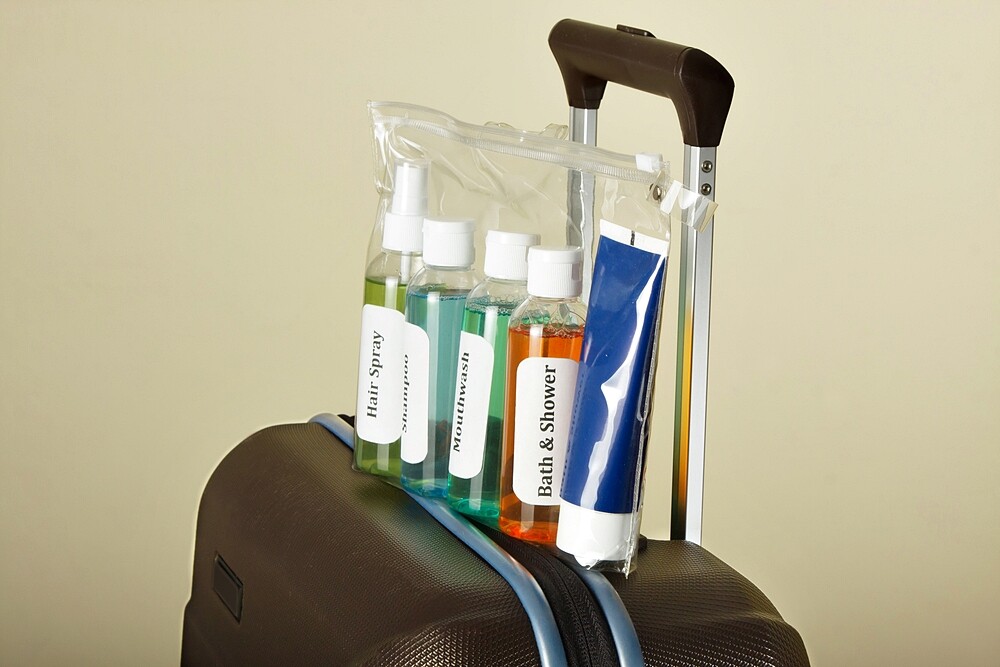What was that again about the liquids in the hand luggage? Everything you need to know about quantities, types and exceptions.
For years now, only a certain amount of liquids has been allowed in hand luggage. What is behind it and what you are allowed to take with you (and how much!).
Why do such provisions apply?
At airports in the European Union, there are restrictions on liquids in hand baggage. This regulation was introduced in November 2006 in response to an attempted terrorist attack on aircraft in August of the same year. The aim was to detonate liquid explosives in drinks bottles during the flight – but the British authorities were able to prevent this.
Liquids in hand luggage
Since then, air travelers have had to pack liquids in their luggage separately – regardless of the airline. In countries outside the European Union, however, other regulations may apply.
- Per person 1 bag with a capacity of 1 liter.
- The bag must be reclosable and made of transparent material.
- In this bag a maximum of 10 containers, each of which may hold a maximum of 100 ml.
This means, for example, that you are not allowed to take a shampoo bottle with a capacity of 200 ml with you – even if there is perhaps only a remainder of 100 ml left. The container must not have a capacity of more than 100 ml! You can buy such a bag in many shops and drugstores.
During the security check, the bag must be placed on the belt separately from the luggage. If you leave it in your hand luggage, the liquids are checked again separately and this causes delays for everyone.
Exception Duty-free
Items purchased from an airport duty-free shop may be carried in hand baggage. However, they must be sealed with proof of purchase in a security bag with a red border and may only be opened at the destination.
Special case medicines and baby food
Liquid medication and dietary food, such as baby food, must be carried in special bags. Such a security bag, also called Security Tamper Evident Bag (STEB), is sealed and is carried in addition to the other liquid bag. There is no quantity limit for the STEBs, but everything in it should only cover the needs of the travel duration. And it must be proven that the medication is needed, e.g. with a certificate.
Since 31.01.2014, these liquids have been checked with a special technique, but nothing else changes for the passenger. If the liquid carried cannot be proven to be harmless, it must not be transported!
It all counts as liquid
Anything that is liquid, viscous, gel-like or creamy at room temperature counts as a liquid for control purposes. And this does not only apply to cosmetics and care products, food also falls under this category. This should go in the bag:
- Perfume
- Lotions
- Creams
- Toothpaste
- Deodorants
- Gels (hair gel, face gel, …)
- Shaving Foam
- Shampoo and shower gel
- Mascara
- Oils
- Soups
- Spreads (e.g. cheese or sausage spread)
- Yoghurt

